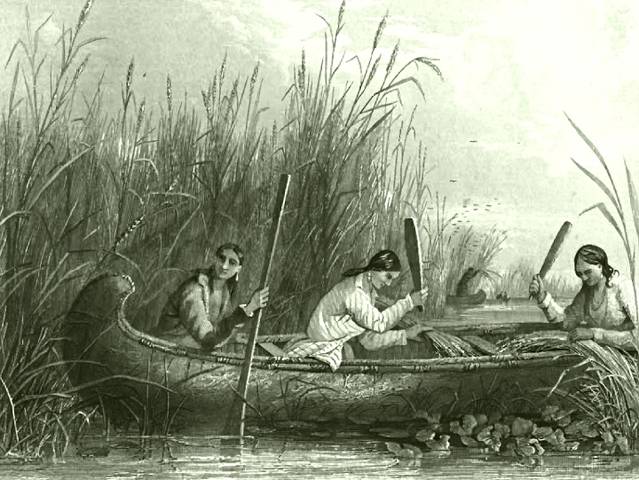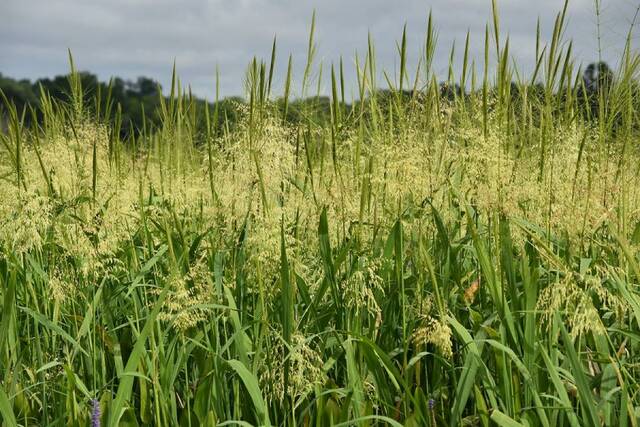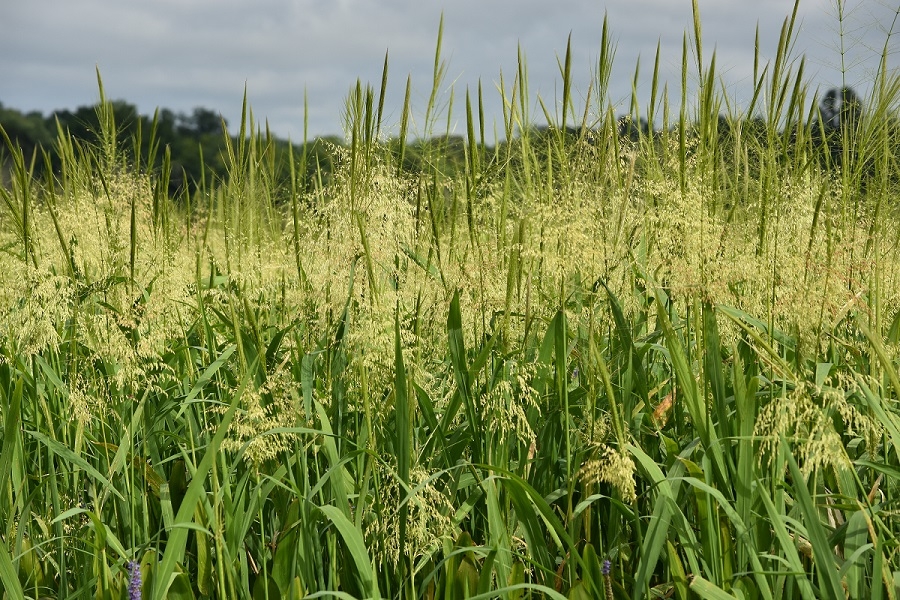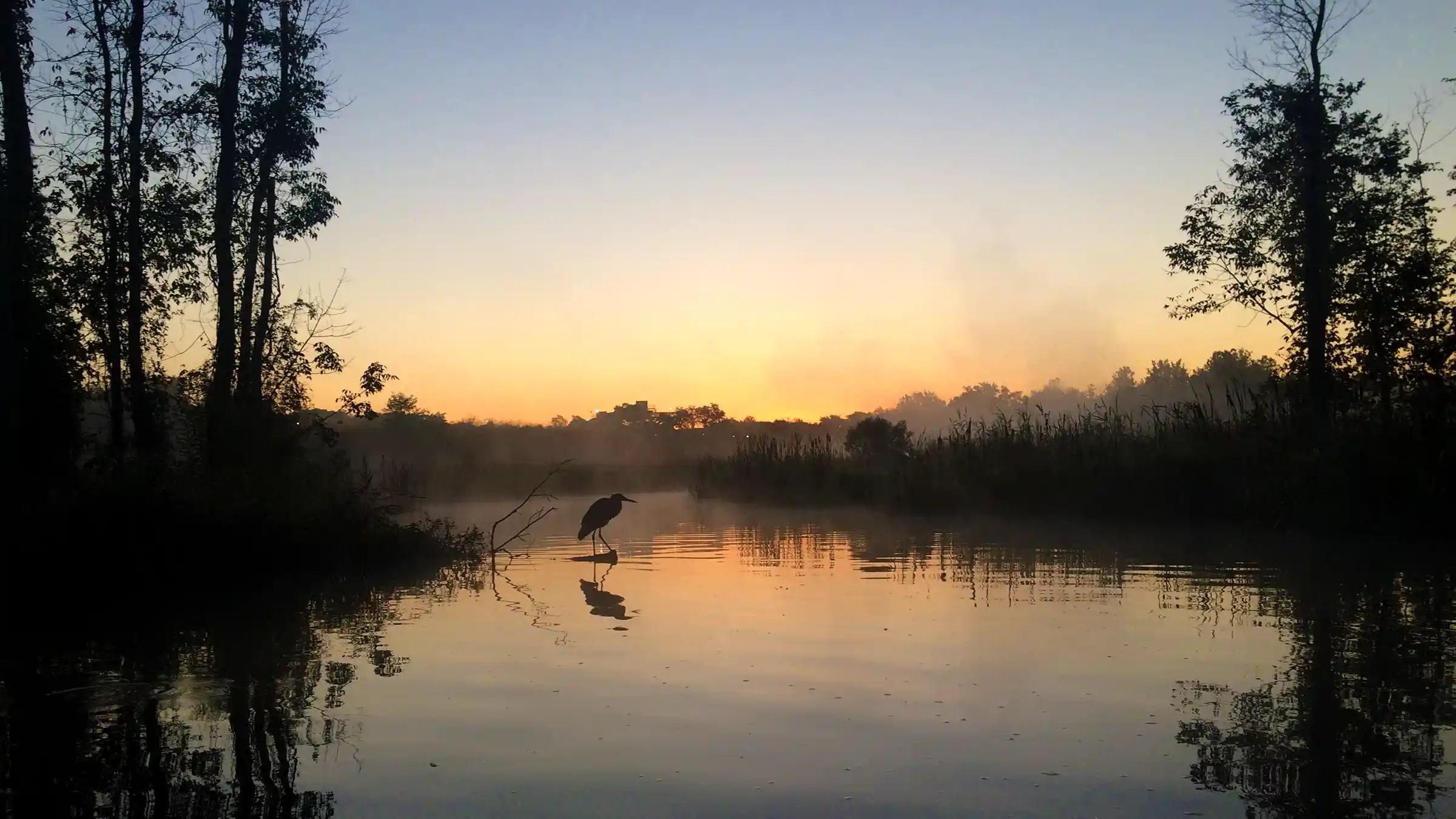The Anacostia River is home to a remarkable plant that plays a significant role in our ecosystem. This “east coast” native wild rice, known scientifically as Zizania aquatica, once thrived in the Anacostia River tidal marshes, but it began declining in the 1800s due to wetland destruction and alteration.
Wild rice was a dietary staple for the native people who once lived along the Anacostia, the Nacotchtank. To learn more about the cultural connection between wild rice and the Nacotchtank people, read our blog post “Harvesting Wild Rice: Connecting Past, Present, and Future”.

(Wild rice being harvested in the 19th century. Image from Wikipedia.)
Further decline occurred in the late 1990s and early 2000s due to an overabundance of Resident Canada geese which caused extensive harm to the local marshlands. These geese were particularly harmful to wild rice, eating the vulnerable wild rice leaves.
AWS the rescue!
In 2004, we launched a wild rice revegetation effort, sourcing seeds from Jug Bay wetlands at the Patuxent River. With advice from wetland experts Jug Bay became a true reference ecosystem for our restoration efforts in the River, our model wetland. The Patuxent River wetlands faced the same vegetation grazing problems caused by an overabundant geese population, and started propagating wild rice stands to restore their wild rice population. Following this model, every year, AWS collected wild rice seed at Jug Bay to sow in the mud flats along the Anacostia River. In a sign of tremendous progress, in the last few years, we have had so much rice that we are able to collect it in the Anacostia River! This means that the wild rice stands we’ve restored are finally reaching self-sustaining levels again.
Since 2020, we have been seeing a wild rice bonanza! The acreage of wild rice doubled last year in our area of monitoring by Langston Golf Course, which has been the stronghold of wild rice in the river, though we are seeing populations at different locations as well. These populations will continue to help purify water that flows into the Anacostia River from our surrounding communities, filtering out pollutants. Unfortunately, this important filtration role means that the wild rice around the Anacostia River is not edible given the toxins it can pass along to people – for now! As water quality improves, AWS looks forward to the day that our wild rice stands could once again be an edible staple for communities along the river. In the meantime, these restored stands provide habitat for local wildlife and help us return the Anacostia River to a thriving urban river.
Wildlife loves wild rice! At this time of the year, you can see big flocks of red-winged blackbirds, hundreds of birds eating both the insects that visit the wild rice blooms and the grains. Also, in the last few years, there have been a few sightings of migratory Sora Rails in the river. Sora aka Carolina rail is a unique rail species that inhabits dense marshlands and, therefore a tricky bird to spot. Soras love wild rice marshes and love to eat the rice grains as well as the invertebrates that live in the marshes, these are much-needed calories for their long journey to Central and South America for the winter. The return of these birds is yet another sign of ecosystem restoration success in our beloved river!

(Photo of wild rice.)
Today, we continue mapping, collecting seeds, and planting rice, with opportunities for volunteer involvement.
How You Can Help
AWS continues to support wild rice restoration with various activities that volunteers can join:
**Seed Collection**: Collecting seeds between August and September, which are stored in refrigerators over winter.
**Mudballing Rice**: Planting wild rice in the spring using mudballs.
Zizania aquatica is more than just a plant; it’s a symbol of resilience and renewal. By nurturing wild rice and the Anacostia River, we contribute to a healthier environment and a more vibrant community. Join the efforts to help restore this hidden treasure of the Anacostia River.

